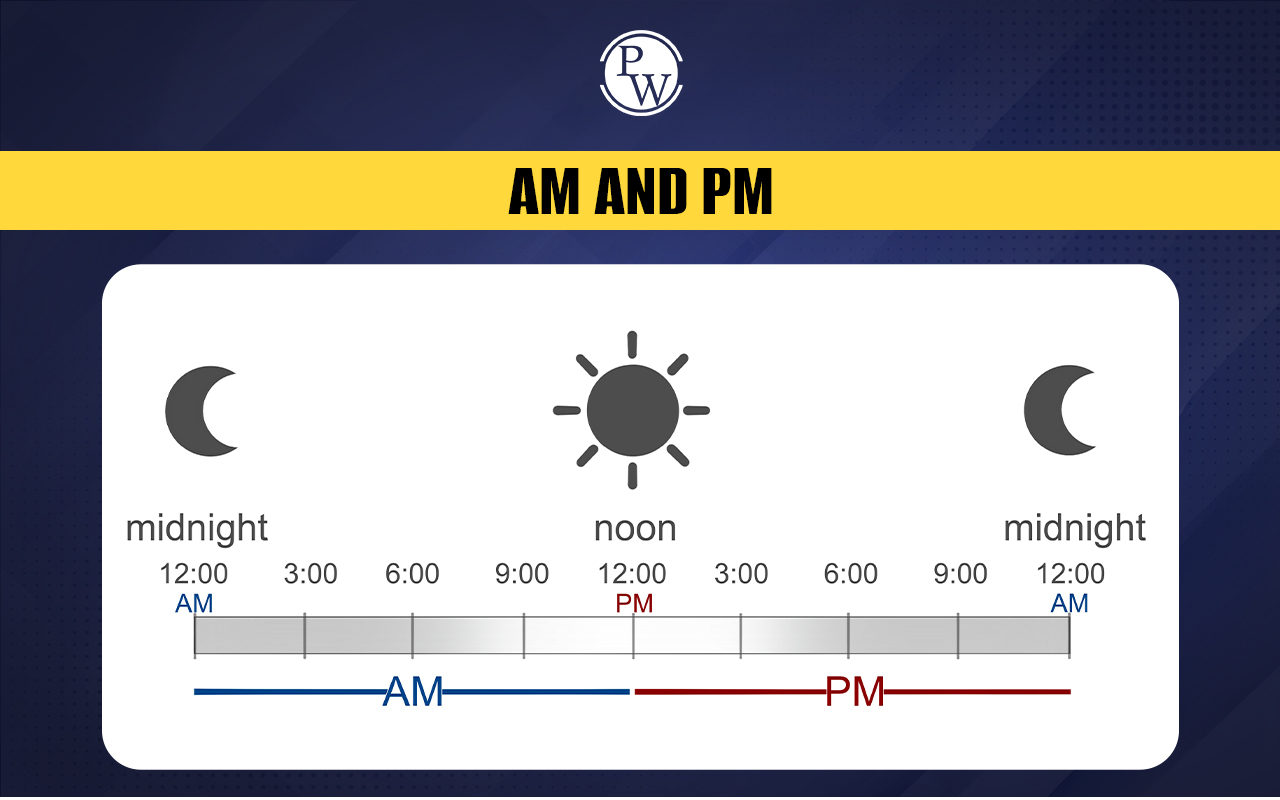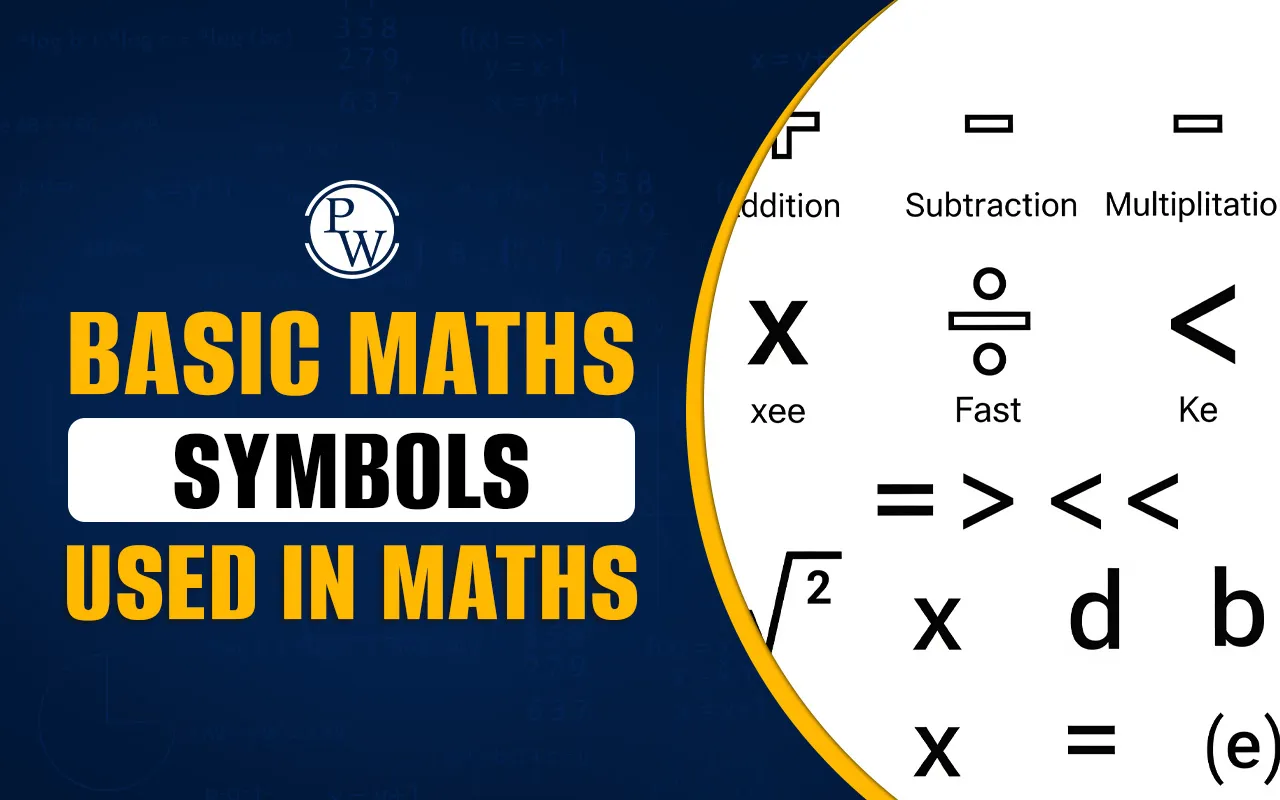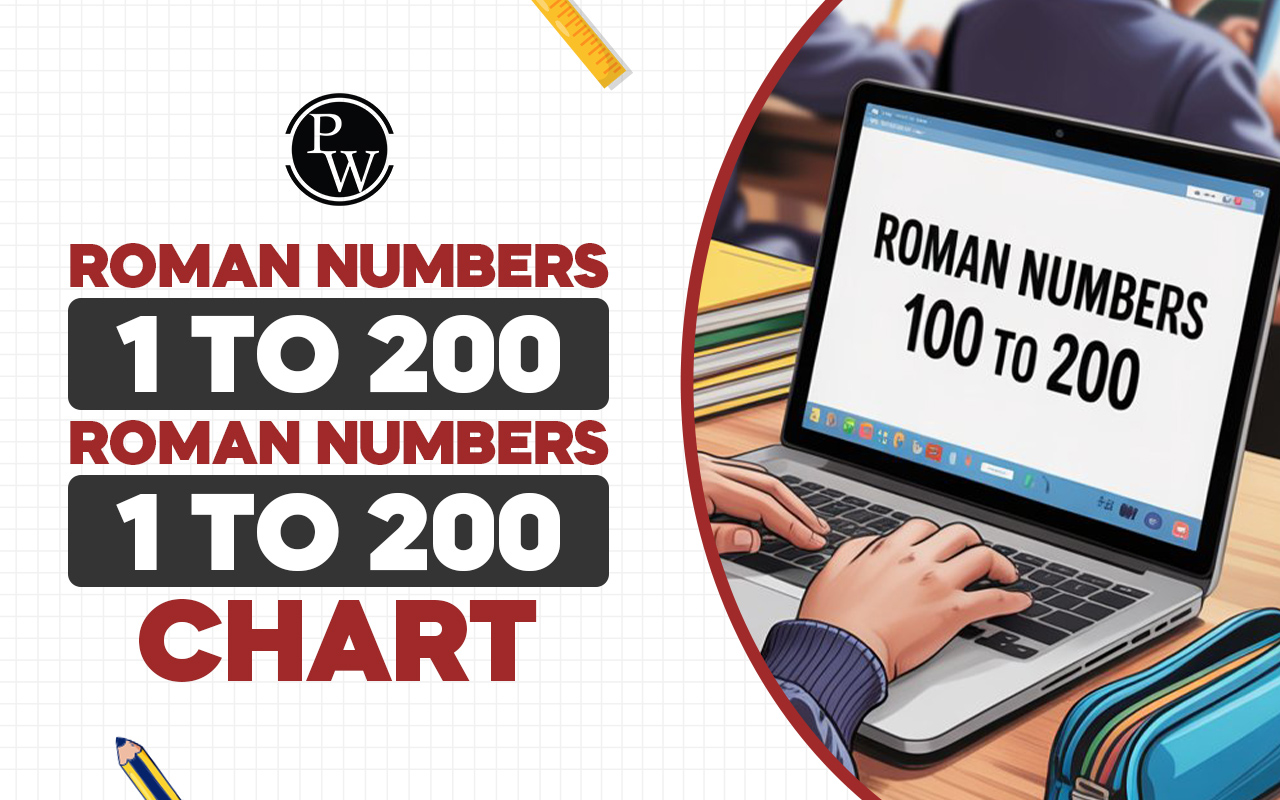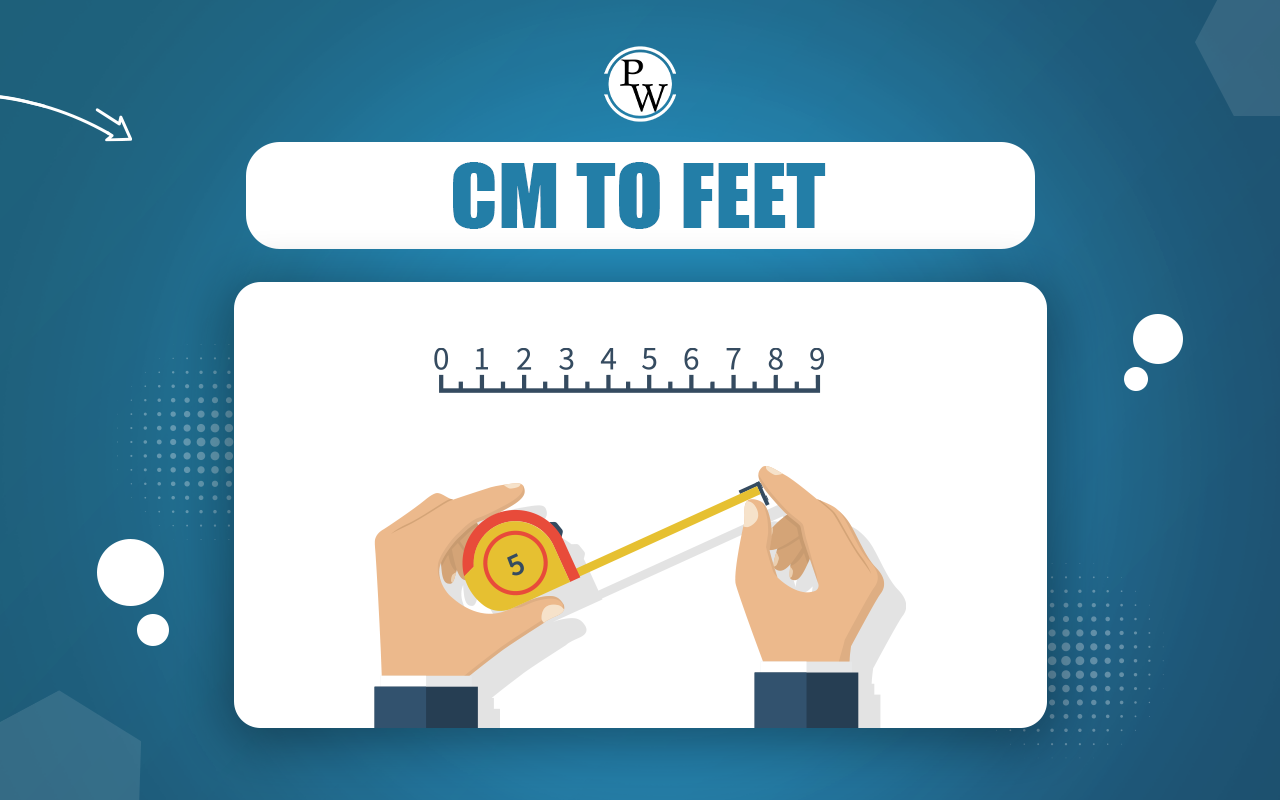

What is AM and PM: Time is a fundamental part of our daily lives, helping us structure our schedules, plan activities, and manage responsibilities. While different regions and cultures have adopted various ways to measure and represent time, one of the most common systems is the 12-hour clock , which divides the day into two equal parts using the designations AM (Ante Meridiem) and PM (Post Meridiem) .
This blog clarifies the concept of AM PM meaning, their application in 12-hour and 24-hour clock systems, and how AM and PM help in organizing daily schedules.
Read More: Geometry
What is AM and PM?
AM and PM are terms used to divide the 24 hours of a day into two 12-hour periods in the 12-hour clock system. AM , short for "Ante Meridiem," is a Latin term meaning "before noon." It refers to the time from 12:00 AM (midnight) to 11:59 AM , covering the early hours of the day and the morning.
On the other hand, PM , short for "Post Meridiem," means "after noon." It represents the time from 12:00 PM (noon) to 11:59 PM , including the afternoon, evening, and night. Together, AM and PM help clarify whether a given time is in the first or second half of the day.
What is the 12-Hour Clock System?
The 12-hour clock system divides the 24 hours of a day into two periods: AM (Ante Meridiem) from midnight to noon and PM (Post Meridiem) from noon to midnight. The numbers 1 through 12 repeat twice daily, requiring AM or PM for clarity.
For example, 6:00 AM represents early morning, and 6:00 PM signifies evening. Midnight is denoted as midnight, marking the start of a new day, while noon is written as 12:00 PM.
This format is widely used in informal and social contexts, such as daily schedules and event planning. Variants like am, a.m., AM, or A.M. are interchangeable. Although intuitive, it can sometimes lead to confusion without proper context.
What is the 24-Hour Clock System?
The 24-hour clock system eliminates the need for AM and PM by uniquely representing each hour of the day, from 00:00 (midnight) to 23:59 (just before midnight). This system is commonly used in technical settings like transportation, military, and healthcare for its precision and clarity.
Morning hours are straightforward, as 03:15 represents 3:15 AM, while afternoon and evening hours are counted continuously; for instance, 15:15 corresponds to 3:15 PM. Noon remains 12:00, but midnight is shown as 00:00.
Conversions between formats are simple : to switch from PM to the 24-hour format, add 12 to the hour (e.g., 7:00 PM becomes 19:00). This system avoids ambiguity, making it reliable for global and professional communication.
Read More: Angles
12-Hour and 24-Hour Clock Conversion Systems
Converting between 12-hour and 24-hour clock formats can seem tricky, but with clear steps and examples, it’s easy to master. Here’s how to convert between the two:
Converting 12-Hour Clock to 24-Hour Clock
Case I: Midnight to Early Morning (12:00 AM to 12:59 AM )
- 12:00 AM (midnight) marks the start of a new day in the 24-hour clock and is written as 00:00 .
- Subtract 12 hours from the hour and remove AM .
Examples:
- 12:00 AM → 00:00
- 12:30 AM → 00:30
- 12:45 AM → 00:45
Case II: Morning to Noon (1:00 AM to 12:59 PM)
For times between 1:00 AM and 11:59 AM, no changes are needed. Just remove the AM notation. For 12:00 PM (noon) , the time remains the same in the 24-hour format as 12:00 .
Examples:
- 5:15 AM → 05:15
- 11:45 AM → 11:45
- 12:00 PM → 12:00
Case III: Afternoon to Night (1:00 PM to 11:59 PM )
For times between 1:00 PM and 11:59 PM, add 12 hours to the hour and remove PM .
Examples:
- 1:10 PM → 13:10
- 7:35 PM → 19:35
- 10:50 PM → 22:50
Converting 24-Hour Clock to 12-Hour Clock
Case I: Midnight to Early Morning (00:00 to 00:59)
Add 12 hours to the hour and add AM .
Examples:
- 00:00 → 12:00 AM
- 00:30 → 12:30 AM
- 00:50 → 12:50 AM
Case II: Morning to Noon (01:00 to 12:59)
- For times between 01:00 and 11:59 , simply add AM to the time.
- For 12:00 , add PM as it represents noon.
Examples:
- 06:20 → 6:20 AM
- 08:45 → 8:45 AM
- 12:10 → 12:10 PM
Case III: Afternoon to Night (13:00 to 23:59)
Subtract 12 hours from the hour and add PM .
Examples:
- 14:25 → 2:25 PM
- 18:40 → 6:40 PM
- 23:15 → 11:15 PM
AM and PM Solved Examples
1: Emma starts her workout at 5:15 in the morning. What is her workout time in the 12-hour clock format?
Solution: Emma starts her workout at 5:15 in the morning.
5:15 in the morning is written as 5:15 A.M. in the 12-hour clock format.
So, her workout time is 5:15 A.M.
Convert 10:20 PM to the 24-hour clock format.
Solution: To convert 10:20 P.M. to the 24-hour clock format, we add 12 hours to the hour and remove P.M.
10:20 + 12 = 22:20.
So, 10:20 P.M. in the 24-hour format is 22:20.
2. Write the time four hours after 14:50 in the 12-hour clock format.
Solution: Four hours after 14:50 is 18:50.
To convert 18:50 to the 12-hour clock format, subtract 12 hours and add P.M.
18:50 - 12 = 6:50 P.M.
So, 18:50 in the 12-hour clock format is 6:50 P.M.
3. Mia’s class starts at 8:45 in the evening. What is the class time in the 24-hour clock format?
Solution: To convert 8:45 P.M. to the 24-hour clock format, add 12 hours to the hour and remove P.M.
8:45 + 12 = 20:45.
So, Mia’s class starts at 20:45 in the 24-hour clock format.
4. Convert 00:40 in the 24-hour clock to the 12-hour clock format.
Solution: For times between 00:00 and 00:59, add 12 hours and add A.M.
00:40 + 12 = 12:40 A.M.
So, 00:40 in the 12-hour clock format is 12:40 A.M.
Fun Facts About AM and PM
- Historical Context: The AM-PM system originates from ancient Rome, where the sundial divided the day into periods based on the Sun's position.
- Global Usage Variations: While most English-speaking countries use AM and PM, countries like France, Germany, and Japan rely on the 24-hour clock.
- Digital Clocks: Many devices default to the 24-hour clock, though users can switch to the 12-hour system.
- Noon and Midnight: Technically, noon (12:00 PM) and midnight (12:00 AM) are neither strictly AM nor PM, as they are transition points.
The AM-PM system remains a cornerstone of how time is represented and understood in many parts of the world. Its simplicity, cultural resonance, and intuitive structure make it an enduring format for day-to-day activities.
However, understanding its nuances, such as converting between 12-hour and 24-hour formats or recognising its limitations, can further enhance its utility.
Whether setting an alarm, scheduling a meeting, or catching a flight, knowing the differences between AM and PM helps keep your plans on track.
About Curious Jr Mental Maths Classes
At CuriousJr , part of Physics Wallah, we provide specialized Mental Maths Classes that help students master problem-solving skills. With over 50 mental math strategies our program is designed to enhance both speed and accuracy in calculations. Our classes focus on developing logical reasoning and critical thinking skills enabling students to tackle complex problems effortlessly. By participating in our CuriousJr classes, you will not only improve your ability to solve challenging tasks but also strengthen your overall cognitive abilities. This empowers you to achieve more in less time making learning math an enjoyable and rewarding experience.
| Related Articles | |
| Subtraction Sums | Word Problems |
| What is an Abacus? | Math Puzzles |
| Multiplication Worksheets : | Multiplication Sums |
AM and PM FAQs
What hours are covered by AM?
What hours are covered by PM?
What does 12:00 AM represent?
What does 12:00 PM represent?
How do you convert 6:00 PM to 24-hour time?











